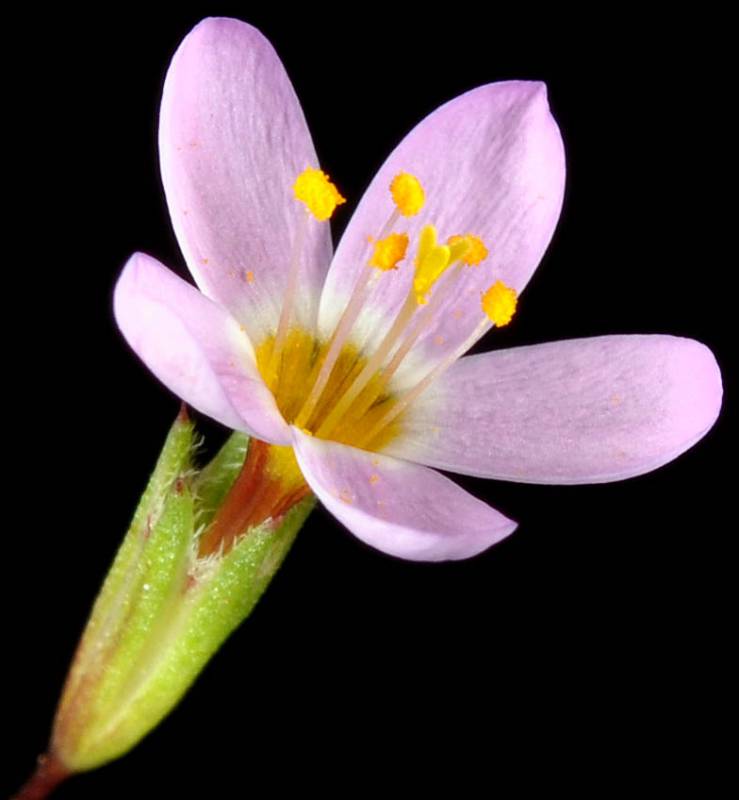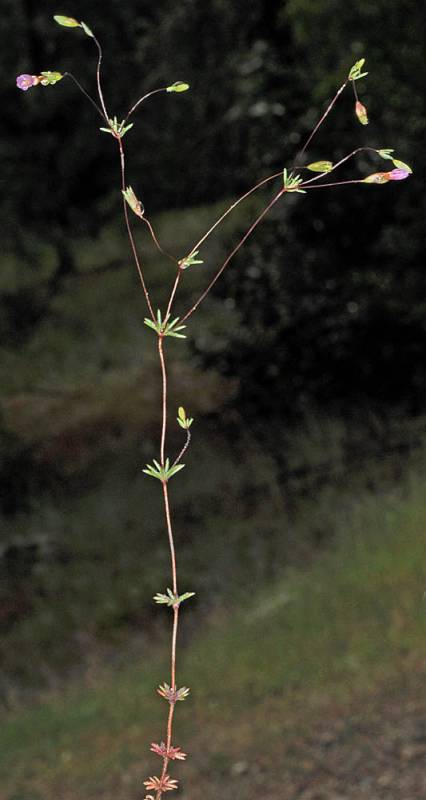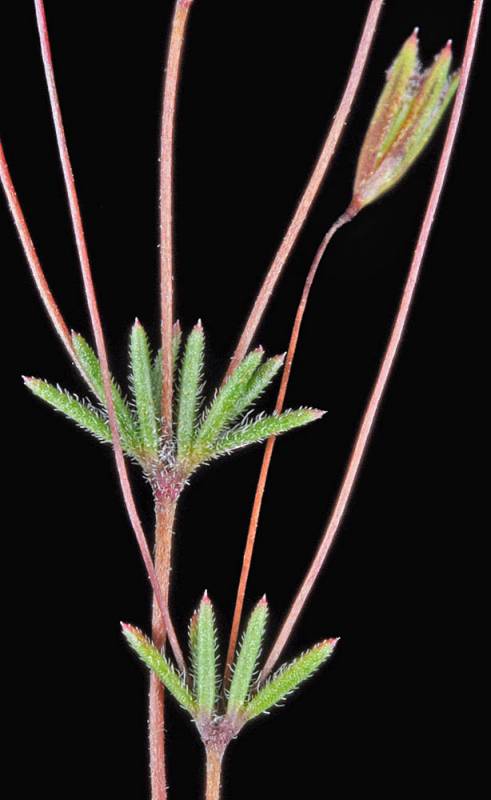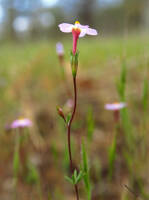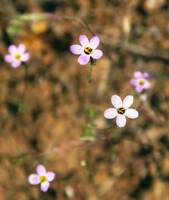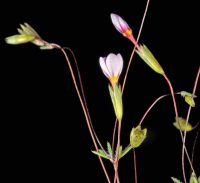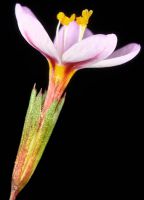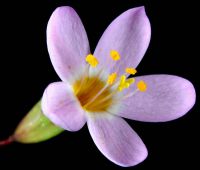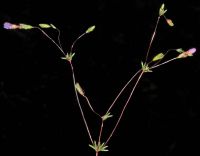Distribution: Occurring east of the Cascades crest in the Columbia River Gorge in Washington; Klickitat County, Washington to California.
Habitat: Dry, open places at lower elevations, often on serpentine.
Flowers: April-May
Origin: Native
Growth Duration: Annual
Conservation Status: Sensitive in Washington (WANHP)
Pollination: Bees, flies, butterflies
Slender annual up to 2.5 dm., with stalked glands on the pedicles, otherwise sub-glabrous.
Leaves opposite, sessile, palmately 3- to 7-parted, less than 1 cm. long.
Inflorescence open, the flowers single and terminal on the branches; pedicles slender and elongate; calyx 3.5-5 mm. long, the tube longer than the 5 teeth, the herbaceous portions wider than the connecting translucent membrane; corolla white to pink or violet, sometimes bicolored, the slender tube exserted from the calyx, with a ring of hairs near the middle; corolla lobes 5, about half as long as the tube; stamens 5, the filaments attached just below the sinuses in the corolla tube; style 3-parted; ovary superior.
Capsule usually with 3, several-seeded carpels.
Publication: Aliso 19(1): 80. 2000.
Linanthus bolanderi (A. Gray) Greene [JPM]
PNW Herbaria: Specimen records of Leptosiphon bolanderi in the Consortium of Pacific Northwest Herbaria database
WA Flora Checklist: Leptosiphon bolanderi checklist entry
OregonFlora: Leptosiphon bolanderi information
E-Flora BC: Leptosiphon bolanderi atlas page
CalPhotos: Leptosiphon bolanderi photos

